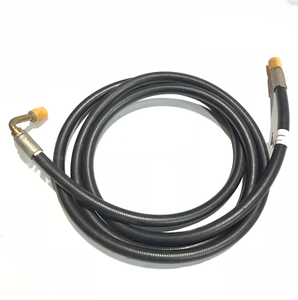There are three primary hydraulic hose parts. The first is an internal conduit to supply the gas. It has a braided wire base. The third part is the outer layer that protects the tubes against the environment and against abrasive chemicals or oil. Such sleeves are designed or modified for mechanical purposes. Some of the Hydraulic in NZ need to operate in devices in different sizes.
While effective, these sleeves are not permanent. The longevity depends on how well it is used. When you push, twist, or pull the tubes too much, the life of the hydraulic tube will be shortened. The hose could break down at extreme temperatures. Improper dimensions, type and weight could also make breakage vulnerable. It is necessary to remove these sleeves particularly if the machinery is heavy on these devices before they fail. If you use the machinery regularly, the best way to always test the tubes is to ensure that they are checked as often.

The tubes are very useful to the machines as they simply add torque. In a standard mechanical system, complex systems are needed. In a hydraulic system, the forces can be directly transferred to where they should be applied with a hose loop. They are not compact and therefore work very well. Depending on the size of the hose, the force exerted at the opposite ends may vary.
The hydraulic tube can provide power from a few ozs. to hundred tons, enabling the devices to generate a remarkably low-speed torque with the utmost precision. Such machines can operate very well where vapors and flame retardants can easily be influenced by electronic devices.
According to the shaft, they have their own classifications and types depending on the temperature in which the fluid they can move and the pressure they can take may operate. The use of the right pad is then important, as these pads operate under high pressure, and if they malfunction, they can cause severe damage that could physically harm people and operators. It is necessary to always test the system and ensure that hydraulic shafts are in the best possible conditions.
The first of these is an internal tube usually made of PTFE (a fluoropolymer with an outstanding chemical resistance), thermoplastic or synthetic rubber. The inside tube material is chosen to best support the transmission of any liquid for which the tube is used. Nevertheless, this layer alone would not be appropriate, because the materials chosen at this stage are not especially pressure-resistant and would harm the usual usage.
The second layer is known as the reinforcement layer and is designed to protect the internal tube against the liquid pressure inside. The internal tube is tightly wrapped in a twisted coiled wire to prevent the inner tube from breaking.
Finally, the outer layer is typically made of a rigid, hard rubber. Each layer is thicker than the two others and has two jobs. This binds the first two layers together internally and prevents displacement, while externally this protects the inner layers from external stress.
With all three layers in place, the hydraulic tube is ready to be mounted with any custom fit and then used. These types of shells can last many years if properly installed and selected, and will work reliably for the entire time.